What is it?
The Go was the launch vehicle for Datsun’s rebirth. The model got a high-voltage launch in New Delhi and was pitched as the car that would upset the applecart in India’s budget hatchback segment. However, the response to the model was tepid and the zero-star crash test rating by Global NCAP early into the car’s life did it no favours either. Datsun has been tweaking the car over the years (including structural updates, we are told) but what you see here is the first big update to the model. It’s got revised styling, a redone cabin and more equipment, and Datsun has also upgraded the car’s safety suite. Impressively, dual airbags, ABS with EBD and brake assist, and rear parking sensors are now standard fit. That’s quite a step up from the outgoing model, which did not get ABS at all and only offered a driver’s side airbag as a paid option. Importantly, Datsun officials tell us the revamped Go meets India’s new crash test norms that come into effect from October 2019 on all cars on sale.
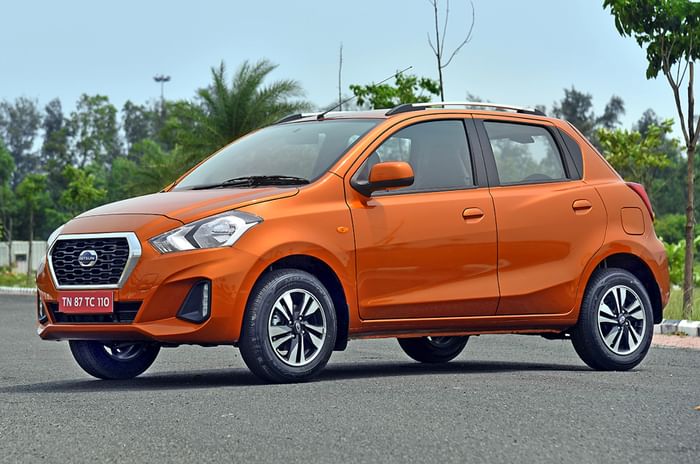
What’s it like on the outside?
The Go gets a series of visual updates and they do their job rather well. While the trademark hexagonal grille gets a new mesh, the talking point at the front is the new bumper. More angular and sportier, even more than the original Go’s, the bumper immediately gives the hatchback’s face more personality. Also, new to the Go are LED DRLs, though they are only unique to the new top-spec T(O) versions. At the sides, it’s the larger wheels that immediately distinguish the updated car – upsized to 14-inches and shod with 165/70 tyres, they enhance the Go’s stance. Diamond-cut alloy wheels, like the ones on the car pictured here, are exclusive to the T(O) variant. They do so much for the look that they are worth stretching your budget for. Of the other things, the body-coloured caps for the wing mirrors are also new. The roof rails you see on the pictured car are from Datsun’s accessories range and are just for show – they can’t lift any load.
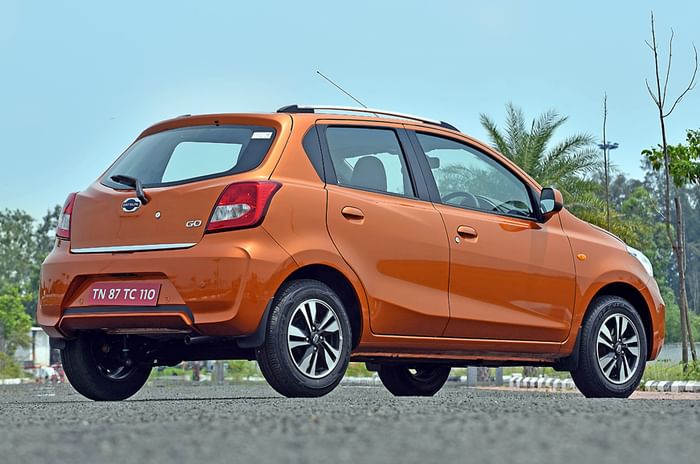
The revised Go’s rear end is identifiable by the new bumper and a chrome lip at the base of the tail gate. While it is not a design detail, the rear wiper is also a fresh inclusion on the top-spec version. There’s no rear defogger, however. In all, the Go looks far more appealing than before, with the new Amber Orange colour also helping give the car a more youthful persona.
What’s it like on the inside?
The revised Go’s cabin is a sea change from that of the original. There’s a new dashboard, new front seats and a whole host of small, but significant updates make the space appear more upmarket and make it more user-friendly, as well. For starters, there’s finally a proper lid for the glove compartment, the driver’s side gets buttons to operate all power windows, and electric adjust for the rear-view mirrors is a welcome addition too. And the instrument’s console gets a refresh of its own, with the inclusion of an analogue tachometer. But the main highlight on the inside of the refreshed Go is the new 7.0-inch touchscreen infotainment system that’s part of the T(O) variant only. It singlehandedly brings the Go’s cabin into the present and is eons ahead of the original’s phone holder and aux-input arrangement. The Blaupunkt system is fairly slick and commendably, and comes bundled with Android Auto and Apple CarPlay. What is bothersome is that the screen is very reflective and the absence of a physical dial also makes adjusting the volume on the move a bit difficult. Also, the USB and aux input are hidden from view under the gear lever.
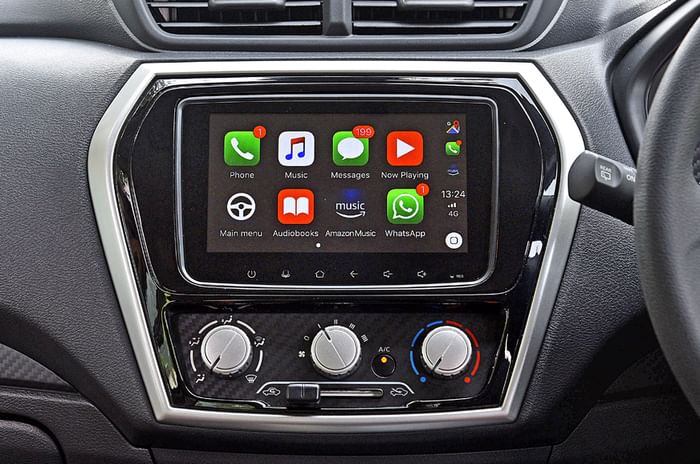
As mentioned, the Go gets new front seats. These, reasonably comfy, individual chairs take the place of the controversial ‘connected’ front seat, and the new space between the seats is now home to a conventional hand brake; the antiquated pull-type lever near the steering has, thankfully, been done away with. There’s still no steering or seat height adjust so the driving position is a one size fits all affair.

Rear seat space is decent but taller passengers will have their knees brushing the front seat backs. Also, the seat is flat so you’ll find yourself moving about in the corners, and the fixed headrests are simply too small to provide sufficient protection against whiplash injuries. Note that the Go had previously been updated with inertia reel seatbelts at the rear.
The Go’s 265-litre boot is large and can hold quite a bit of luggage. You do miss a parcel shelf, however.
What’s it like to drive?
The Go uses the same 1.2-litre three-cylinder petrol engine as before, and its 68hp and 104Nm power and torque figures, respectively, are par for the course for this class of car. Still, performance is more than adequate for town. Initial response is a bit meek, but by 2,000rpm the engine gets into its rhythm and makes the Go feel peppy and light on its feet. The Datsun is quite well-suited to the urban grind, though the 5-speed gearbox should have been smoother in its shifts.
The Go picks up pace smartly, but the engine runs out of steam at highway speeds. Cross 80kph and you’ll also sound off the speed buzzer – a new addition that will be required by law, come April 2019. The Go is not a car that you’d be inclined to drive much faster than needed, to begin with. The light body (it tips the scales at 846kg) tends to move about in crosswinds, and it isn’t as sure-footed under hard braking as we’d have liked either. Still, the inclusion of ABS makes a world of a difference to confidence behind the wheel. Ride quality is good, if on the firmer side, for the most part and what also comes handy on patchy surfaces is the 180mm of ground clearance.
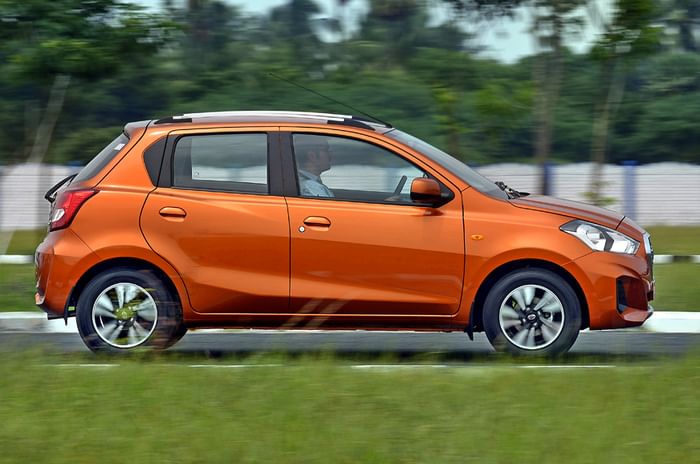
An area where the Go has made an improvement is in refinement. There’s more cladding so you no longer hear pebbles and small stones, kicked up from the road, clunking around in the wheel wells. You hear less of the engine too. The three-cylinder engine does get thrummy when you extend it and you can feel vibrations on the gear lever at idle.
Should I buy one?
The 2018 Datsun Go’s prices start at Rs 3.29 lakh (ex-showroom, India) for the base D trim. The mid-spec A, A(O) and T trims come in at Rs 3.99 lakh, Rs 4.29 lakh and Rs 4.49 lakh, respectively, and cost about the same as corresponding versions of the old car. Factor in the additional kit on offer, and what is clear is that the Go packs in far more value than before. The top-spec T(O)’s Rs 4.89 lakh price is also competitive, when you see the equipment it comes with.
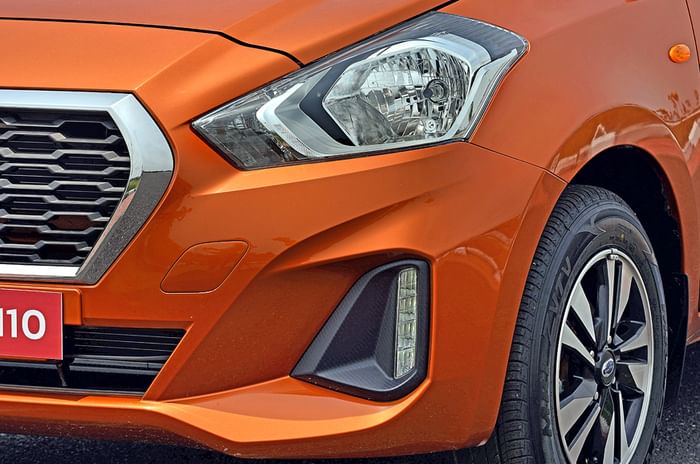
The changes to the Go make it feel significantly better than before. It feels like a more wholesome package and its appeal finally goes beyond the promise of low running and maintenance costs that Datsun has relied on to pull in buyers so far. While only a straight up comparison with the likes of the Tata Tiago and Maruti Suzuki WagonR will tell if it’s the best car for the money, the Go has certainly become far easier to recommend than ever before.






































